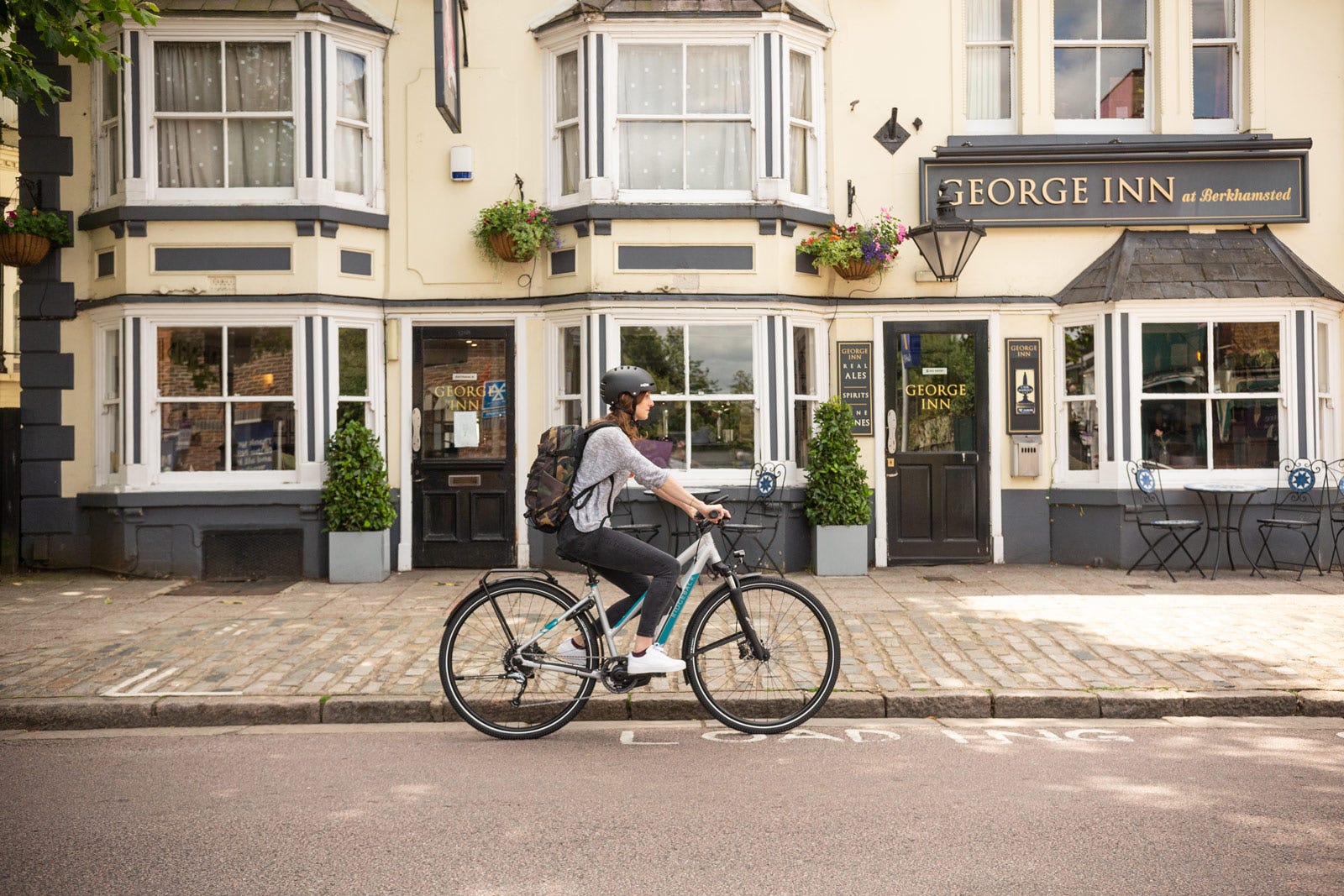Need Help? Call us on 0208 385 3440
E-Bike buyer's guide
Whether you're buying your first E-Bike, or just need a refresher on the latest tech, our E-Bike buyer's guide takes you through the basics you'll need to get the best E-bike for you.
Our E-bike guide explains motors, batteries, maintainance and more, providing all the information you'll need to make an informed decision about your new E-Bike.
What is an E-Bike?
An E-Bike is a pedal-assisted bicycle. That means it’s just like a normal push bike – in that you have to pedal – but a battery and motor combine to assist you and provide extra power for every time you turn the pedals.
That means if you stop pedalling the bike will start to slow down; the assistance only kicks in when you’re pedalling the bicycle.
In the UK, E-Bikes are limited to 250w of assisted power or a 15.5mph maximum speed, and if you go over that speed then the motor will cut out and you’ll have to pedal unassisted like on any other bicycle.
The good news is that 250w is an awful lot of assistance when you’re going uphill and it will make a real difference and lower your effort level considerably.
There are a few specific parts that make up an E-Bike that you won’t find on a standard bike.
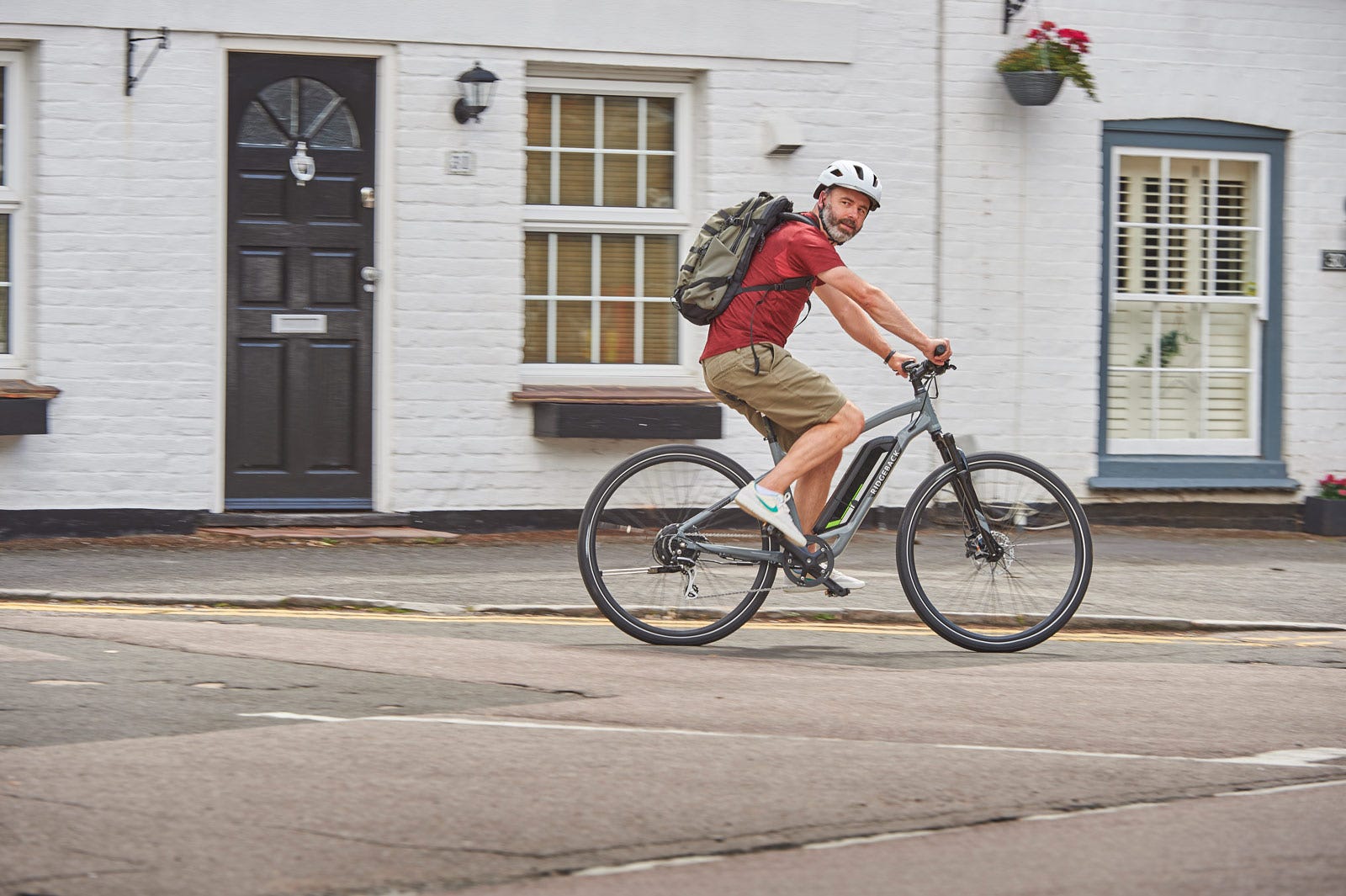
Motor
The motor is the part that provides the assistance when you pedal. There are basically three types of motor for E-Bikes: front hub, rear hub or mid-drive. Each one does something a little different, and you can read about them in more detail in our guide to E-Bike motors.
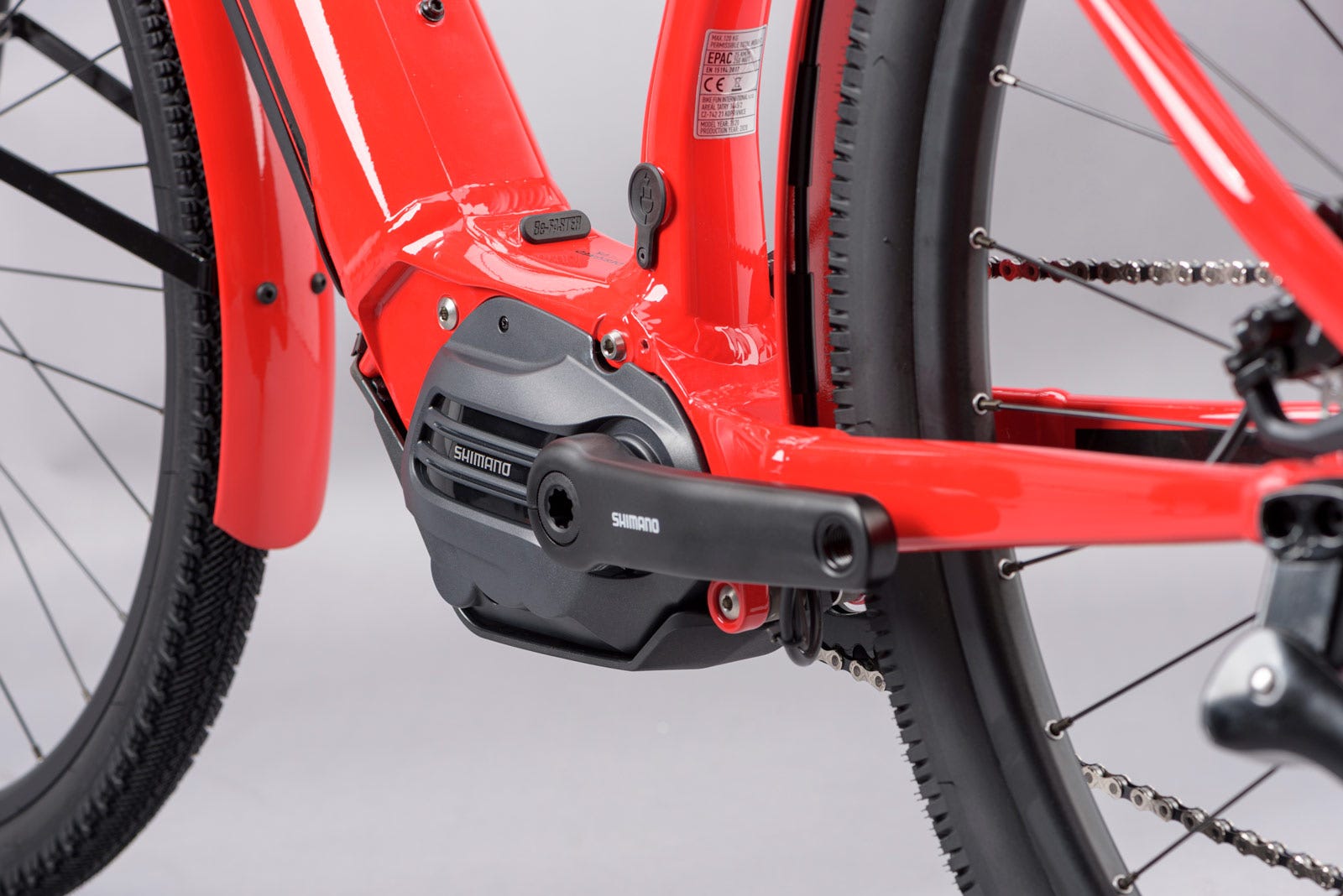
Battery
The battery, as you’ve probably guessed, is the power source for an E-Bike. Almost all modern E-Bikes use Lithium-Ion batteries with capacities generally falling between 300-500Wh.
The larger the capacity of your battery, the larger the range of your E-Bike on a single charge so, for the most part, a larger battery is a better choice if you’re planning on riding longer distances. You can find out more about E-Bike batteries in our guide here.
Since all E-Bikes run on batteries, they all need charging. While most E-Bikes let you charge the battery while it’s still on the bike, you can remove some batteries and use them with an external charger.
That’s particularly useful if you buy a spare battery and want to charge one up while you’re out riding your bike. Either way, when you buy a Ridgeback E-Bike it will come with the hardware required for charging so you don’t need to worry about buying one separately.
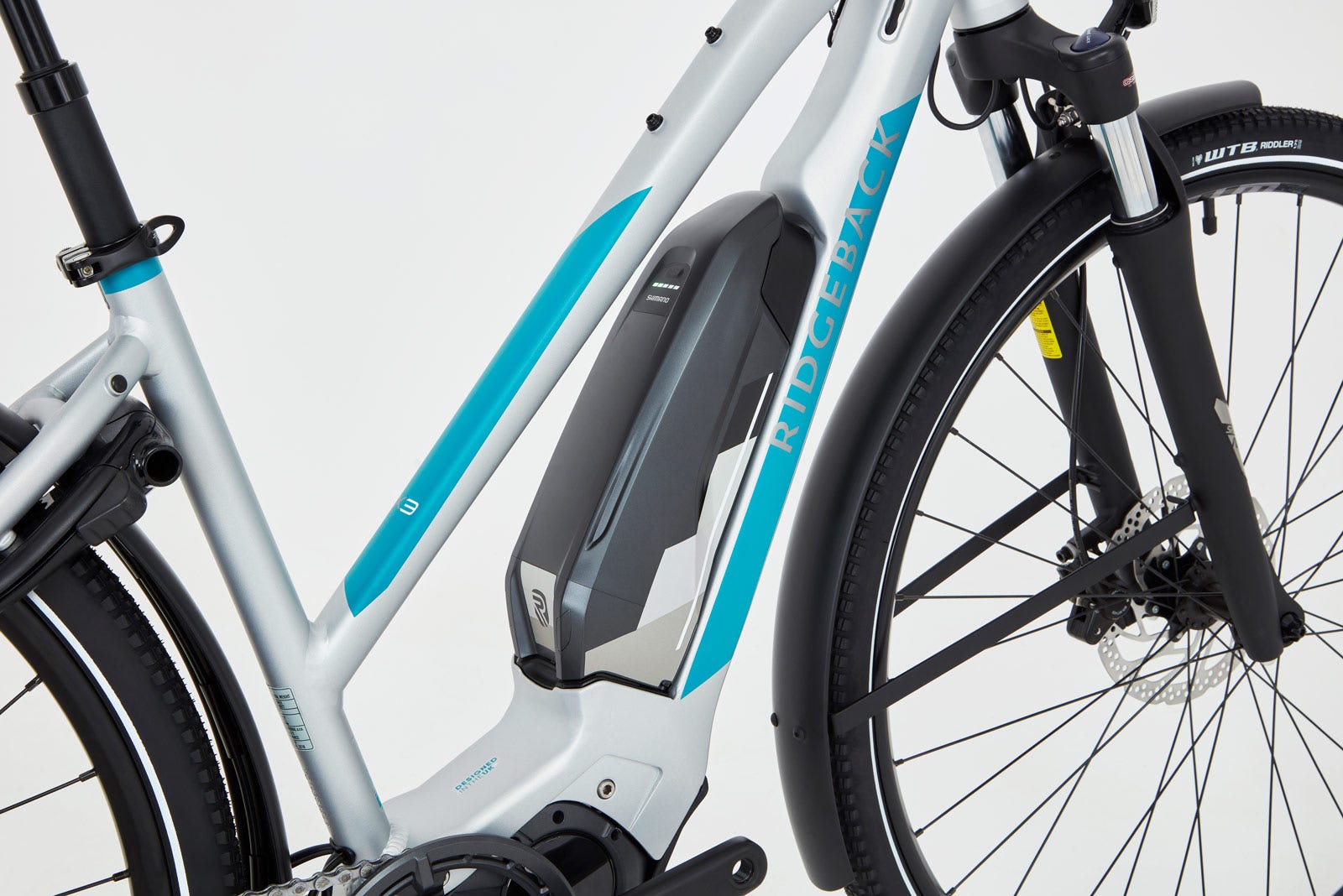
Sensor
The motor on an E-Bike doesn’t just work on its own. It needs a sensor to tell it when to kick into action. The sensor basically tells the motor when you’re pedalling so it knows that it needs to provide assistance.
Some sensors are also torque-based (like the Shimano STEPS system) which tell the motor not only that you’re pushing the pedals but how hard your pushing them, while others are motion based (like the SportDrive system) that simply tell the motor that the bike is moving and it needs to help.
The bonus of a torque-based sensor is that it’s a bit ‘smarter’ and can detect how hard you’re trying and provide assistance accordingly, rather than just giving assistance according to the mode you’ve selected.
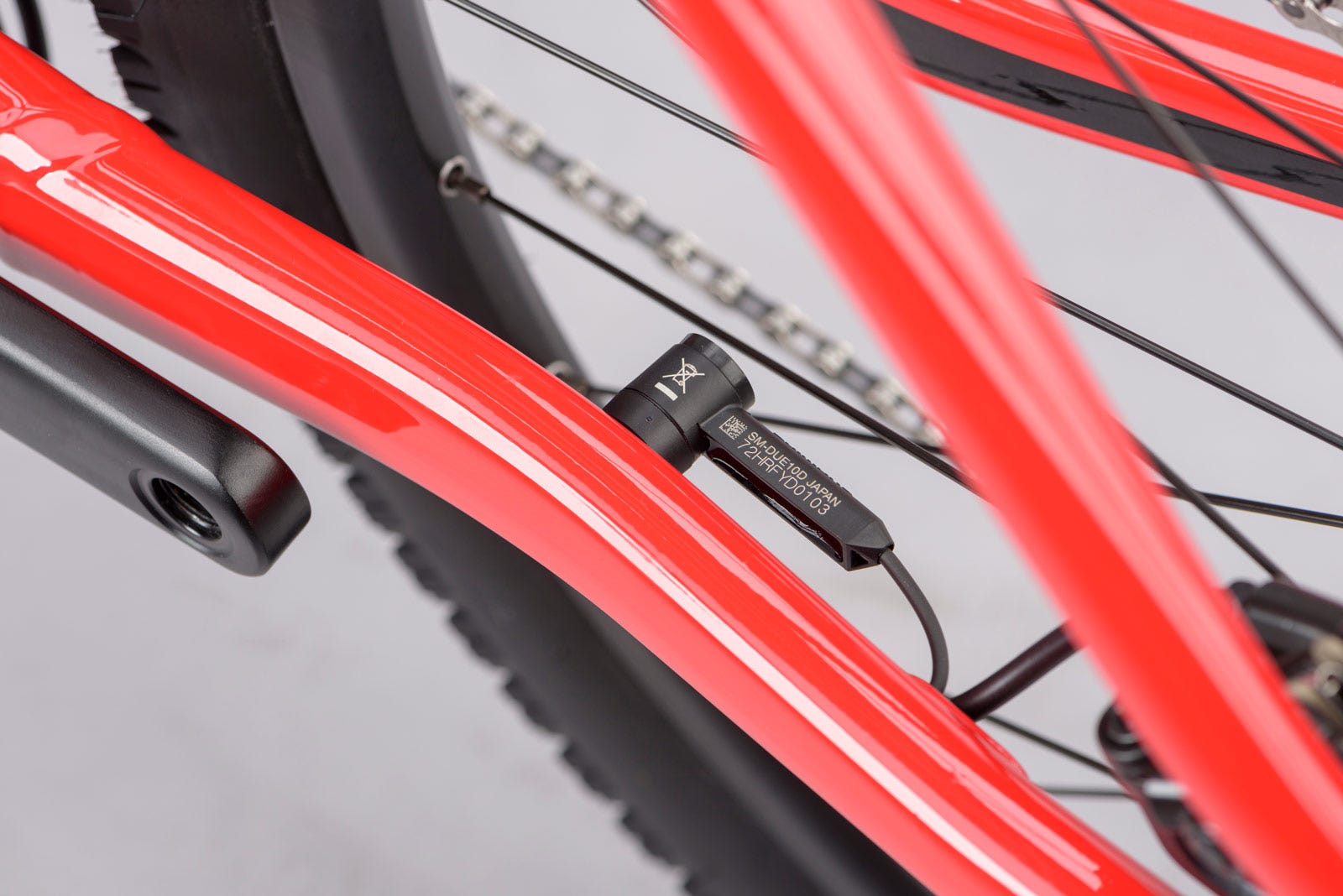
Display
There is one more part of an E-Bike system, and that’s the display. All Ridgeback E-Bikes have systems that let you select your assistance level using a controller and a display to let you know what mode that the bike is currently using. Shimano STEPS systems can go one step further and use your phone as that display, meaning you don’t need more than one thing attached to your handlebars.
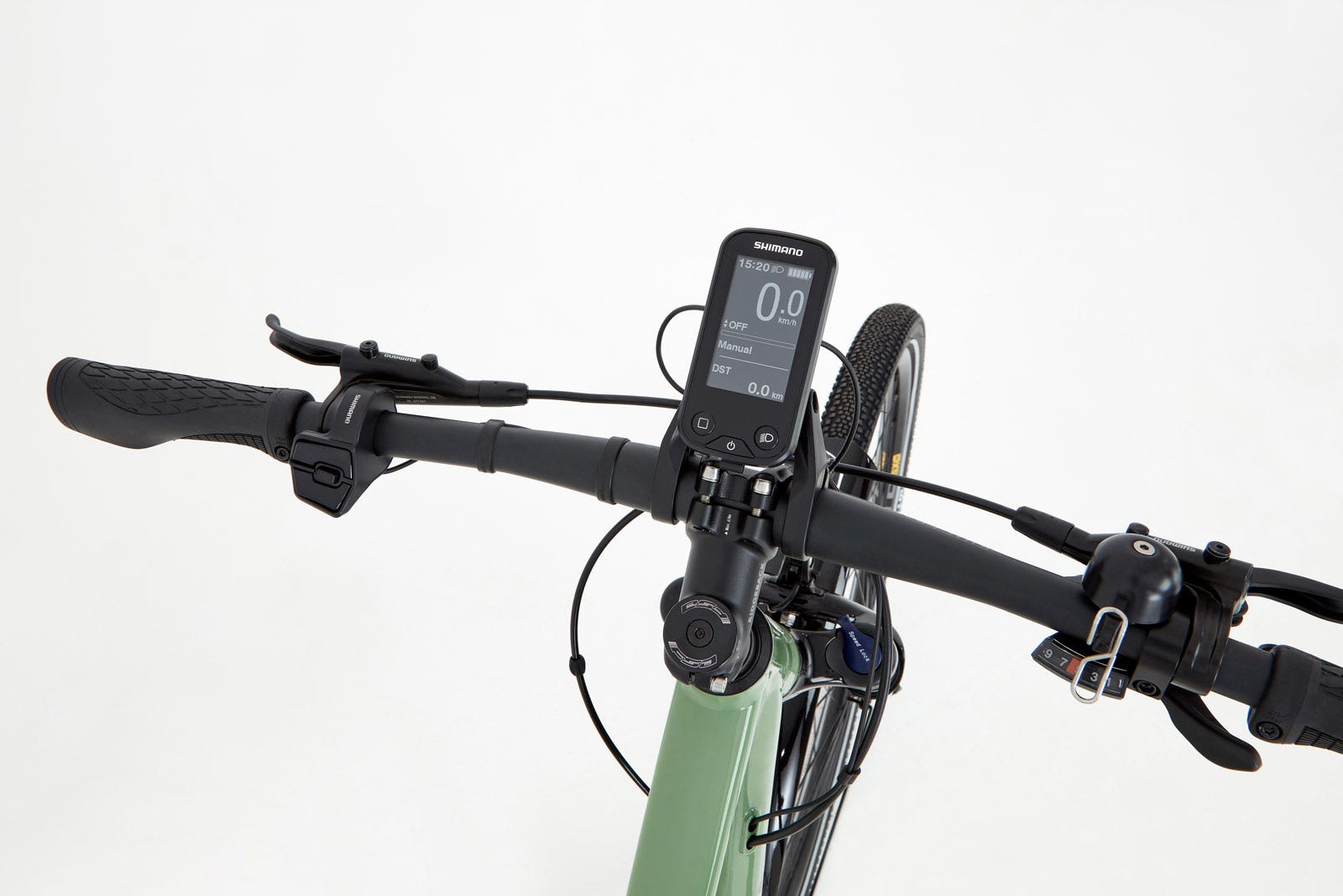
Maintenance
Like all bikes, E-Bikes require regular maintenance to make sure they’re working optimally. The good news is that the motor system of an E-Bike is sealed so that you don’t need to touch it. Should something go wrong then you will need to take it to your local E-Bike shop to have it looked at by a qualified mechanic.
Outside of the drive system, though, E-Bikes need to be regularly checked and maintained just like any other bike. You can read more in our guide to E-Bike maintenance.
